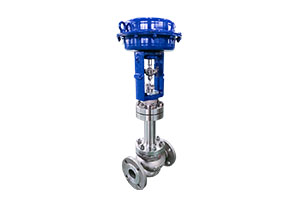Feb. 08, 2021
Common Faults And Maintenance Of Valves
The valve supplier summarizes the common failures of the valve and several reasons for the failure.
First of all, the reason for the problem is that the operation method of the staff is not in place during the operation, so the limit device cannot fully exert its specific function, and the excessive torque should have a corresponding protective effect, but In the actual operation process, this protection function was not brought into play, resulting in valve failure.
The frequency of use is an important factor affecting the life of the valve. If the valve is used for a long time without sufficient rest, the valve will malfunction. At the same time, some parts are not inspected in detail during the equipment process, resulting in damage to the plump This is also an important reason affecting the use of mechanical equipment.
During the operation, the staff did not handle the switch with care. Once the strength of the operation is not effectively controlled, it will damage the internal structure of the valve and affect the sensitivity of the valve.
The welding process is also the cause of valve failure. A good welding process can ensure the smooth use of the valve. On the contrary, a poor welding process will cause cracks on the surface of the valve, which will adversely affect the use of the valve.
Under normal circumstances, in order to ensure the performance of the valve, the internal packing is an important link, but in actual use, the packing is too compact, which will cause the performance to be affected to a certain extent.
2.1 Maintenance of transmission parts
Since the opening and closing of the valve will cause the action of the connection part, in the long-term opening and closing action, the lubricating grease previously added will gradually lose, and during the operation, the drying rate of the lubricating grease will be accelerated due to corrosion and temperature. Check the transmission parts frequently and add grease in time. Prevent wear of transmission equipment due to lack of lubricating grease, or transmission failure due to jamming.
2.2 Maintenance during valve grease injection
When the valve is greased, the problem of grease injection is often ignored. After the grease gun is refueled, the operator selects the valve and the grease injection connection mode and then performs the grease injection operation. There are two situations:
On the one hand, the amount of grease injection is small, and the grease injection is insufficient, and the sealing surface is worn faster due to lack of lubricant; on the other hand, the grease injection is excessive, causing waste. The sealing capacity can be calculated according to the valve size and category, and then a reasonable amount of grease can be injected.
When the valve is greased, the pressure problem is often ignored. During the fat injection operation, the fat injection pressure changes regularly. If the pressure is too low, the seal will leak or fail; if the pressure is too high, the grease injection port will be blocked, the sealant will harden or the sealing ring will lock up with the valve ball or valve plate. Usually, when the grease injection pressure is too low, the injected grease mostly flows into the bottom of the valve cavity, which usually occurs in small gate valves. If the grease injection pressure is too high, on the one hand, check the grease injection nozzle, if the grease hole is blocked, replace it; on the other hand, if the grease is hardened, use cleaning fluid to repeatedly soften the failed sealing grease and inject new grease to replace it.

2.3 Maintenance of packing
The valve packing is an important part to improve the sealing performance. If the packing fails, it will cause leakage and the valve function will fail. Especially when the fluid temperature inside the pipeline is high and corrosive, it will accelerate the aging of the packing, shorten the service life, and affect the function of the valve. Therefore, the maintenance of the filler can improve the efficiency of use. In order to ensure the elasticity of the packing, the static pressure test is the standard when the valve leaves the factory. If leakage occurs during the application process, the nuts on both sides of the packing gland can be tightened to prevent leakage. Don't screw it all at once to prevent the packing from losing its elastic function. In some valve packings, molybdenum disulfide lubricating paste is installed. As the valve is used, lubricating grease should be added regularly to ensure the sealing function.
Headquarter Add.: SUPCON Park, No.309 Liuhe Road, Binjiang District, Hangzhou, 310053, China.
Tel.: +86 571 8111 9774
Fax: +86 571 8111 9737
E-mail: [email protected]
